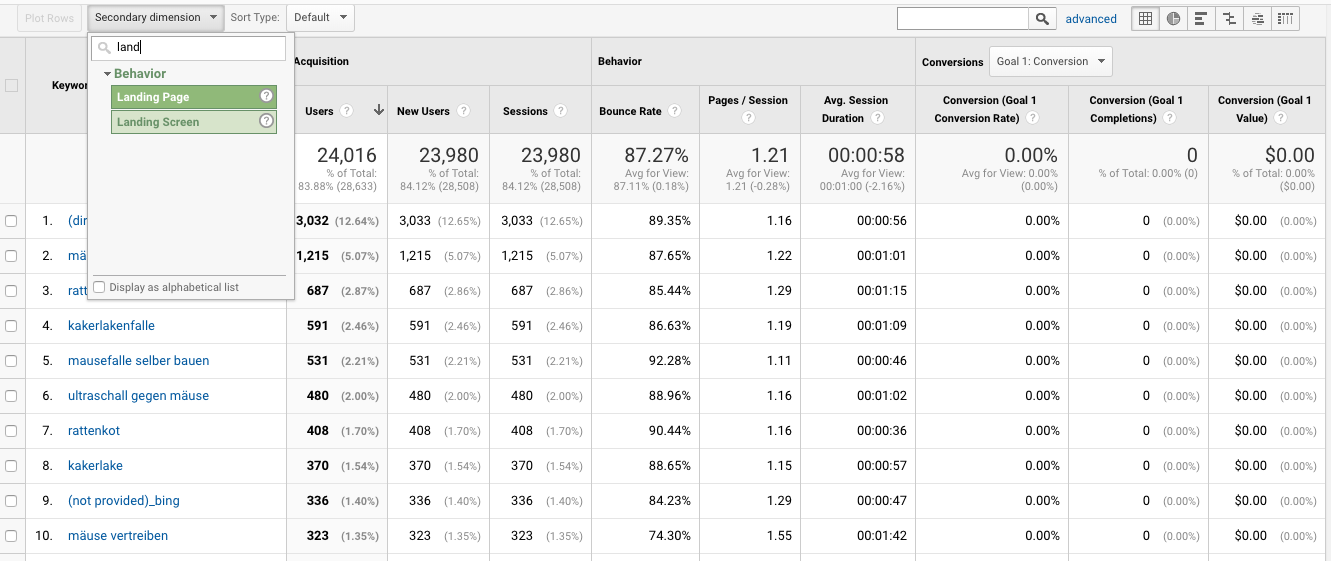Optimizing Information Analysis: Google Analytics Secondary Dimension Explained
Optimizing Information Analysis: Google Analytics Secondary Dimension Explained
Blog Article
Unlocking the Power of Secondary Measurement Analytics for Enhanced Information Insights and Decision-Making
In the realm of data analytics, primary dimensions often take the limelight, but the real deepness of understandings exists within the realm of additional measurements. These added data factors provide a nuanced point of view that can light up connections and patterns not easily apparent at very first glance. By utilizing the power of second dimension analytics, companies can introduce covert fads, discover relationships, and essence extra meaningful verdicts from their information. The potential for boosted decision-making through the usage of these second measurements is substantial, assuring a deeper understanding of complex information sets and leading the way for even more educated tactical selections.
Importance of Second Dimensions
Checking out the relevance of secondary measurements in analytics reveals the surprise layers of data insights critical for informed decision-making in various domains. Additional dimensions provide a deeper understanding of primary data by providing additional context and perspectives. By including additional measurements right into analytics, companies can remove extra nuanced and thorough insights from their datasets.
One secret importance of additional measurements is their ability to section and categorize main data, permitting an extra thorough evaluation of specific subsets within a dataset. This division enables companies to recognize patterns, fads, and outliers that might not appear when considering the data in its entirety. Additional measurements aid in uncovering connections and reliances in between various variables, leading to even more exact forecasting and predictive modeling - secondary dimension.
Furthermore, second dimensions play a vital function in boosting data visualization and coverage. By including second dimensions to visualizations, such as charts or charts, analysts can produce extra helpful and insightful depictions of information, facilitating much better communication of findings to stakeholders. Generally, the integration of second dimensions in analytics is crucial in unlocking the complete capacity of data and driving evidence-based decision-making.
Key Benefits of Using Second Measurements
Utilizing second measurements in analytics uses companies a tactical advantage by enhancing the deepness and granularity of information insights. One vital advantage of including second measurements is the capability to sector and filter data, permitting a much more thorough evaluation of details facets within a dataset. This segmentation allows companies to get a more nuanced understanding of their target market, performance metrics, and other important information points. By exploring information using secondary dimensions such as time, place, device type, or individual demographics, organizations can reveal patterns, trends, and correlations that might or else stay concealed.
Additionally, the utilization of additional measurements boosts the context in which primary information is interpreted. By leveraging second measurements in analytics, organizations can harness the complete capacity of their information to drive much better decision-making and attain their service purposes.
Advanced Data Evaluation Strategies
A deep dive right into advanced data analysis methods exposes advanced methods for drawing out useful insights from complicated datasets. One such technique is equipment understanding, where algorithms are utilized to determine patterns within data, anticipate outcomes, and make data-driven choices. This approach permits for the automation of analytical model structure, allowing the handling of big quantities of information at a much faster pace than standard approaches.
One more innovative strategy is predictive analytics, which utilizes statistical formulas and machine discovering techniques to forecast future end results based upon historic data. By examining fads and patterns, organizations can prepare for customer behavior, market fads, and potential risks, equipping them to make aggressive choices.
Furthermore, text mining and belief evaluation are valuable strategies for extracting insights read review from unstructured data sources such as social media comments, consumer reviews, and survey responses. By evaluating text information, organizations can recognize consumer opinions, determine arising trends, and boost their services or products based on responses.
Enhancing Decision-Making Through Additional Dimensions

Enhancing decision-making through secondary measurements makes it possible for businesses to make more informed and targeted calculated selections. By segmenting consumer information based on second measurements like acquiring background or interaction degrees, firms can customize their advertising methods to details target market sections, leading to enhanced conversion rates and client complete satisfaction. Additionally, additional dimensions can assist identify correlations and relationships in between various variables, making it possible for companies to make data-driven decisions that drive growth and profitability.
Implementing Second Measurement Analytics
When integrating second dimensions in analytics, companies can unlock deeper understandings that that site drive tactical decision-making and boost overall efficiency. This entails comprehending the specific concerns the company seeks to respond to and the information points needed to resolve them.

Moreover, organizations need to leverage advanced analytics devices and modern technologies to streamline the process of integrating second dimensions. These tools can automate data processing, evaluation, and visualization, permitting companies to focus on translating understandings as opposed to manual data control.
Verdict
To conclude, secondary dimension analytics play an important duty in boosting information understandings and decision-making procedures. By making use of advanced data analysis techniques and executing additional measurements successfully, companies can open the power of their information to drive calculated service choices. The crucial advantages of using additional dimensions can not be overstated, as they offer a deeper understanding of data patterns and connections. It is vital for organizations to take advantage of secondary dimension analytics to remain affordable in today's data-driven landscape.
In the world of information analytics, primary dimensions usually take the limelight, but the true deepness of understandings lies within the world of additional dimensions.Making use of additional measurements in analytics uses organizations a strategic benefit by enhancing the deepness and granularity of data understandings. By leveraging additional measurements in analytics, companies can harness the full possibility of their data to drive better decision-making and accomplish their company purposes.
Executing information recognition processes and routine audits can help preserve information high quality and integrity.
By using sophisticated data analysis strategies and executing second dimensions properly, organizations can open the power of their information to drive tactical organization decisions.
Report this page